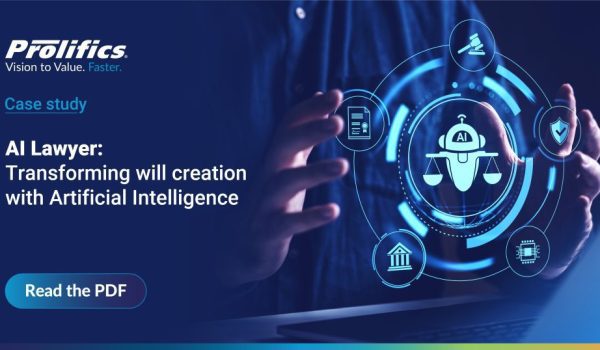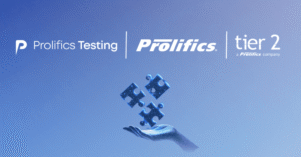Data-driven businesses place increasing demands on their IT teams to create agile systems that can track and respond to ever-evolving conditions. The importance of IT observability seems fairly apparent.
Consider this: what would you do if you couldn’t immediately respond to and resolve supply chain issues? How about slowdowns on the back end or shipping delays? Real-time intelligent performance data gives you the holistic, accurate view you need to ensure that your organisation operates as smoothly as possible.
AI and IT are undergoing immense changes. Companies around the globe are digitising at a rapid clip, with a proliferation of new apps, with more cropping up every day. Millions of people have left their jobs, creating a skills shortage. New development models add stress—requiring new tools and techniques to handle modern apps.
Robust IT observability helps you spot problems as they manifest—so you can address them as quickly as possible. In today’s lightning-fast world, you need this sort of constant awareness to keep your costs under control and your business competitive.
For example, a retailer who knew an hour earlier about a problem might be able to prevent a sales system from going down.
Of course, better observability isn’t a cure-all. Technical issues always have some risk of occurring—but with a better view, you can assess the probability and the damage and calculate the costs of downtime in advance. Even if you can’t stop a problem in its tracks, you can at least be prepared for it.
What Exactly Does IT Observability Mean?
IT observability is a new idea regarding the capacity to determine internal processes within complex technical systems. This differs from merely monitoring apps, penetrating more deeply to identify problems.
 On a broader scale, observability refers to the general notion of being able to infer the internal state of a system from what it emits. In IT, tools like IBM’s Instana combine data pipelines and analyse their contents. This process helps attain business goals such as improving customer service.
On a broader scale, observability refers to the general notion of being able to infer the internal state of a system from what it emits. In IT, tools like IBM’s Instana combine data pipelines and analyse their contents. This process helps attain business goals such as improving customer service.
Essentially IT observability helps maintain complex and automatic systems in functional condition. With businesses increasingly dependent on networks of apps, observability has become a critical tool for streamlining operations.
Until now, IT personnel have used application performance monitoring (APM) to identify problems. But the main trouble with APM is that it’s tied to older application models. It simply can’t keep up with new code and workflows.
Observability solves this problem by continuously processing performance data (“telemetry”), producing instantaneous detailed results. All the evidence of software behaviours feeds into an intelligent program, which uncovers the source of potential problems.
Observability vs Monitoring: What’s the Difference?
While observability and monitoring sound similar on the surface, they cover slightly different territories. Monitoring is the relatively simpler method of looking at predetermined metrics—the “known unknowns”. By contrast, observability has to do with inferences from expectations: the “unknown unknowns” casting a wider net than monitoring.

For example, monitoring a system may entail measuring whether it’s running or not or if the database is full. There’s a clearly defined status for each measurement. On the other hand, observability would involve gauging a normal range of operations and then assessing any deviations.
A business may have a regularly occurring spike of activity, such as a retail store’s busiest hour of the week or an office on Monday morning. Observability takes these types of activity patterns into account, unlike basic monitoring.
A spike matching the usual pattern would not necessarily indicate trouble—but an equivalent spike at an unexpected time would reveal a possible problem. Monitoring is blind to considerations other than the predetermined metric, such as the raw traffic volume. Observability incorporates context in analysing signals to determine more valuable risk estimates.
Tools prioritising observability incorporate AI to evaluate normal conditions. Then they watch data for departures from the norm, a level up from monitoring. Now you can ask not just “is it on?” but “is it performing as it should?”
How Does Observability Work?
Observability combines multiple performance measures to give you a big-picture understanding of the system at hand. The main components of observability include logs, metrics, traces, and dependencies.

An observability platform helps process this information for the IT team. Given that it involves far more data than conventional performance monitoring, tools often use AI to process the information.
This software examines where the data comes into a system, where it is stored, what processes it undergoes, and where it leaves. Over time a profile emerges of normal behaviours at different times and days.
You can view this as a line graph of trends, which shows any anomalies in new data plain as day. Then you can drill down into the root causes of the abnormality. Data can tell you if there’s a software problem, a network problem, or a problem with the data itself.
How Data and Application Observability Gives You the Insights You Need
The basic principles of observability pertain to several areas, including data and applications. The goal is to understand what’s occurring within the relevant system. Having detailed knowledge from data and application observability provides you the clues necessary to find and fix problems.

With data observability, as opposed to application observability, you can see problems or variations in data quality. For instance, you may have an average of 10% incorrect customer e-mail addresses or an average of 20%. Depending on your expectations, the technology can then assess whether new data is suspicious.
These two aspects of observability–data and application–complement each other. The application may see data that appears correct for its input criteria, but examining the data on its criteria can reveal a different picture. The combined perspective gives you clarity in identifying which problems to fix.
Data and application observability encompass not only the description of problems but also the context of problems to assist you in solving them. This helps prevent future occurrences of similar issues.
Engineers can investigate a problem as deeply as necessary to understand the cause. For example, they can use a visual interface of traces to see which steps run slowly or fail.
Software tools for observability provide convenient dashboards that you can modify. The insights are available to look at graphically any time you want to log in. You can also receive automatic alerts, such as by e-mail or Slack, when any observed behaviour passes a customisable threshold.
Integrating Observability Into Your Company’s Digital Transformation Program
Now that you understand the basics of observability, you’re ready to incorporate it into your larger-scale modernisation efforts. With the right digital transformation program, you can maximise your systems’ potential with real-time data.

To start, identify when data’s moving, in case it doesn’t arrive where it should or if it gets modified. These are the key stress points to catch potential problems.
Once you’ve established data flows, you can look for a sensible tool such as IBM’s Databand. This will allow you to watch the data as it moves through pipelines.
IBM’s automation solutions work to boost performance while reining in expenditures. Massive amounts of observability metrics supply engineering and operations teams unprecedented insights; for modern cloud-native apps, this is crucial to minimising downtime and resource waste. In fact, with IBM, some companies have cut their IT costs and MTTR by half, saving $2 million.
Many companies already have basic monitoring tools to indicate when an application might be broken. Observability builds on that, elevating the experience by incorporating already-available logs and data from all your applications and systems into one solution.
This holistic approach unlocks information about your applications that you might never have noticed. Through its inferences, the observability tool can detect correlations that explain difficult-to-find technical problems.
You wouldn’t see these with a conventional monitoring tool since it only tracks specific predetermined metrics. To piece together a complete understanding would require a lot of people and tools, and time—unless you’ve integrated observability into your enterprise.
When Is It Helpful?
Observability is more appropriate for some contexts than others. It depends on an organisation’s specific requirements and systems; for instance, businesses with more legacy systems would have more need for observability.
Knowing your needs will help determine when it makes sense to use an observability tool. For example, by the time you have around 200 data flows or so, it makes sense to use a software such as IBM’s Databand software-as-a-service (SaaS) solution to scale upward with your business.
Beneath that level of complexity is somewhat manageable without observability. But as more and more pipelines manifest, it becomes difficult to find problems immediately—and the consequences become more severe. Most mid-sized organisations have enough applications and complexity to benefit from observability.
While any industry can benefit, it’s already common to implement observability tools in retail, finance, and other verticals with complex IT ecosystems. This will only become more important as infrastructure develops towards hybrid cloud configurations. It’s just too difficult for a person to pull out the root causes of problems with that much complexity.
When you’re ready to start implementing observability, it’s smart to first produce a plan and a detailed architecture before selecting a platform. Your plan delineates your goals and the relevant data, including available data and data that could be made available.
The architecture goes into more depth, diagramming how you will process source data for users. At this stage, you can also include any tools you want. This then segues into implementing a specific platform.
How IBM’s Observability Solutions Provide Value to Your Business
IBM offers a range of observability solutions, including Instana, Turbonomic, and Cloud Pak for Automation, along with the platform Databand. Each solution targets a different situation, assisting businesses in implementing observability.
The main business benefits of IBM’s observability solutions derive from understanding and resolving problems more quickly. Knowing about a problem ahead of time can save you the headache of interrupting normal operations, including the revenue you would’ve lost.
Regarding observability solutions, Instana automatically processes events, traces, and other sources of information, speeding up the analysis and resolution of incidents. You can explore Instana’s real-time interactive model of how software entities relate to each other.
This context simplifies the diagnosis and repair of issues, even for complex software. Discoverability and configuration are also automated, so you can easily keep pace in dynamic environments.
IBM Turbonomic works by collecting data from specific applications and the cloud infrastructure. AI analyses the data, and straightforward visualisations display resource use. Turbonomic can automatically manage infrastructure in response to the data. By economising on resources, companies save millions of dollars.
But Turbonomic is not just an observability solution; it also provides other functionalities for businesses. For example, try using it to analyse your use of cloud resources—if it finds unused resources, you can disable these to cut costs and lower your environmental impact.
To derive maximum benefit from observability, it’s important to have the right mindset for DevOps and use the right automation platforms. IBM’s AIOps Solutions Portfolio and Databand produce powerful insights to accelerate development while reducing errors and instability.
Take Your IT Observability Strategy to the Next Level With Prolifics
Observability offers an exciting new approach to developing insights about your enterprise systems, extending beyond direct application monitoring to improve control over microservices and modern applications. Tools are now available to support your implementation of observability—including reliable technologies from IBM, implemented by Prolifics.
With Instana, Turbonomic, Cloud Pak for Automation, and Databand, any organisation can use the insights to save time and money. It’s just a matter of having the right knowledge—which is where leading digital engineering from Prolifics comes in. Have your current systems evaluated by Prolifics to find out what IT observability can do for you: request a free quote today or click here for a free trial.









